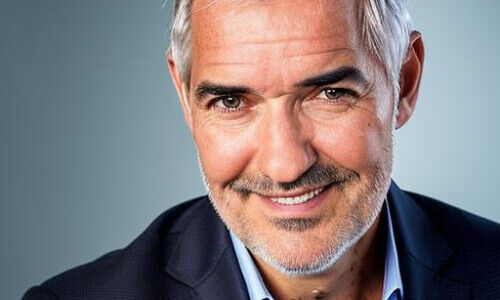Former banker Pascal Botteron is using artificial intelligence to hunt for ESG outperformance. He tells finews.com why the «G» component is key in delivering the environmental and social returns.
Pascal Botteron, why do you focus on the «G» part of environmental, social, and governance investments?
The «G» can be seen as the steering wheel for how a company can be impactful and make changes. The «E» and «S» become resulting factors of «G». In other words, we consider governance as the locomotive of a good ESG integration.
Can you provide an example?
A company with a good environmental approach does not necessary have a good social one or good governance. But company with a good «G» will address, with a high probability, the «E» and the «S». This is something we have observed in discussions with many boards but also in academic research, where companies that have good governance rate better on environmental and social aspects too.
So in fact governance is the most important factor in ESG investing?
Not necessarily in itself but we strongly believe that it leads to the the other two: good ESG strategy starts with the G. Our investment thesis is that governance triggers long-term outperformance and brings about good ESG culture.
Can you explain how you measure governance with language analysis and recognition?
Assessing the quality of governance encompasses many aspects such as strategy, culture, people, engagement, stakeholder management, and environment. To understand how each of these elements is addressed by a company, Professor Didier Cossin of IMD has developed a language-based systematic model composed of clusters of positive and negative words. This model is applied to the companies’ annual reports, leading to the assessment of an overall company DNA and more precisely providing a governance score.
Practically all your career has been devoted to somehow outperforming the markets. Now you seem to have found the recipe. How did that happen?
Over the years, I have become convinced that a good investment strategy is characterized by a combination of several criteria: a performance catalyst, a theme supported by a macroeconomic view and an authentic performance DNA that cannot be fitted in a backtesting. This combination is not easy to find but I believe the good governance strategy addresses all these aspects.
What's the economic rationale behind this?
The model is pure, simple, supported by the economic fundamental that a well-governed company should generate outperformance. In addition, it is finding an important missing piece of the emerging ESG industry – the measurement of the «G» and of its influence on the «E» and «S». Based on this academic research, backtesting was conducted with strong performance results. This led to the live testing of the model for three years. All the ingredients of the recipe were here to turn the model in an investment product and then launch of the GBI – Good Governance Fund – in early 2019.
How are you positioned at Green Blue Invest and how are you growing your assets?
Our first program identifies good governance within U.S. companies. The superior ratings we have received from independent ESG rating companies and the strong performance delivered since our launch at the beginning of 2019 led to the market recognition of our initiative. In addition to this fund, we run for institutional investors several advisory mandates implementing this research.
We launched our second program in February. The catalyst is the fact that listed companies have to participate in the research to reach decarbonization targets. We believe that companies with the strongest patents in the field will make the strongest impact on carbon reduction and subsequently benefit from the growth of an emerging decarbonization industry.
As ESG investing goes mainstream, giants like Blackrock are dominating. How can you still exploit competitive advantages?
We differ in many ways from very large players. We are ESG specialists as opposed to investment generalist. Our company is fully and only dedicated to ESG through our philosophy, our engagement, our offering, our beliefs, and our future direction. One of our clients made the analogy between the emergence of ESG investment products and the emergence of hedge funds two decades ago. When hedge funds emerged, investors were looking for specialist investors – hedge fund advisors – while generalist like large banks were offering more general access vehicle as part of their broad offering. Similarly, we see a place in the market today for fully-dedicated ESG boutiques managers.
What are Green Blue Invest's targets?
In terms of business development, the end of the several Covid lockdowns will allow us to visit clients again and also see prospects who have shown strong interest for our solutions during the last 12 months. We anticipate good developments on both sides of the Atlantic. The recent positive response from institutional clients both in- and outside of Switzerland are an immense plus to further energize both our product development as well as growth of our client relationships.
Pascal Botteron is co-founder and CEO of Green Blue Invest, an ESG investment boutique based in Geneva. Before co-founding Green Blue two years ago, Botteron worked in traditional banking including at Deutsche Bank's asset management arm. Botteron, who holds a PhD in finance, has also lectured at the University of Zurich, IMD in Lausanne, and HEC in Paris.































